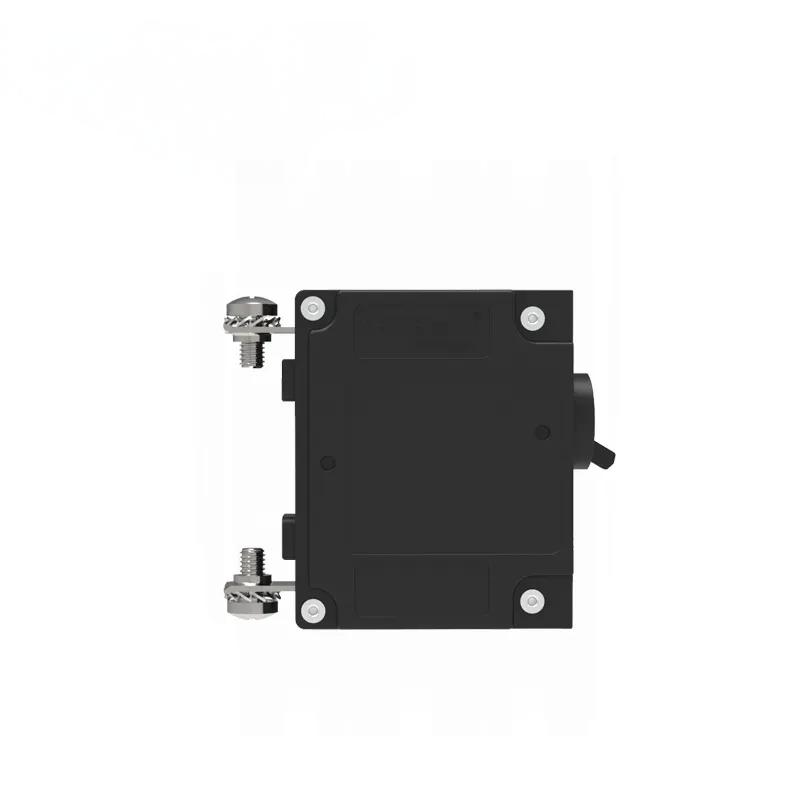Thermal switches, also known as temperature switches, are critical components in modern industrial and consumer systems. They act as guardians against overheating, ensuring the safety and efficiency of equipment by opening or closing electrical circuits based on predefined temperature thresholds. This blog explores their working principles, types, applications, and the latest breakthroughs in thermal switch technology.
What Are Thermal Switches?
A thermal switch is an electromechanical or electronic device designed to detect temperature changes and trigger a response—typically opening or closing a circuit—to protect machinery from damage caused by excessive heat. Unlike thermostats, which regulate temperature continuously, thermal switches operate in a bi-stable manner, switching states abruptly at specific set points24.
How Do Thermal Switches Work?
The core principle relies on thermal expansion or phase changes in materials. Here’s a breakdown:
- Mechanical Thermal Switches:
- Bimetallic Strips: Two metals with different thermal expansion coefficients bond together. When heated, the strip bends, breaking or making contact to open/close the circuit28.
- Liquid/Gas-Actuated Switches: A fluid-filled bulb expands with temperature, increasing pressure in a bellows or diaphragm. This movement drives a spindle to toggle the switch26.
- Electronic Thermal Switches:
These use sensors like thermistors or RTDs to convert temperature changes into electrical signals. For example, a thermistor’s resistance shifts with temperature, triggering a transistor or relay to activate1012.
The deadband—the temperature difference between activation and reset—ensures stability by preventing rapid cycling612.
Types of Thermal Switches
- Bimetallic Snap-Action Switches:
Common in appliances like ovens and water heaters, these are cost-effective and compact but less precise210. - Thermal Reed Switches:
Use a hermetically sealed reed switch and thermal ferrite. Above the Curie point, the magnetic field changes, opening the contacts2. - Gas-Actuated Switches:
Ideal for industrial safety systems, these offer high accuracy and durability, often used in petrochemical and power plants210. - Solid-State Electrochemical Switches:
A newer innovation using materials like cerium oxide (CeO₂). These switches achieve high thermal conductivity ratios (e.g., 5.8 on/off ratio) and excel in waste heat recovery and electronics cooling7913.
Applications Across Industries
Thermal switches are ubiquitous in both everyday and specialized systems:
- Home Appliances: Ovens, refrigerators, and boilers use them to prevent overheating210.
- Automotive: Protect engines and batteries by monitoring coolant and battery temperatures24.
- Industrial Processes: Safeguard machinery in pharmaceuticals, food processing, and power generation212.
- Renewable Energy: Manage heat in solar panels and thermal storage systems913.
The Future: Cerium Oxide Thermal Switches
Recent breakthroughs by Hokkaido University researchers highlight cerium oxide (CeO₂) as a game-changer. Unlike traditional materials, CeO₂ is abundant, eco-friendly, and offers unmatched performance:
- On/Off Thermal Conductivity Ratio: 5.8 (off-state: 2.2 W/m·K; on-state: 12.5 W/m·K).
- Durability: Stable over 100 redox cycles7913.
These switches enable advanced thermal management in electronics, energy systems, and even “thermal shutters” for dynamic heat regulation in buildings913.
Why Thermal Switches Matter
From preventing kitchen fires to optimizing industrial efficiency, thermal switches are indispensable. Innovations like CeO₂-based devices promise a sustainable future, reducing reliance on rare materials while enhancing performance. As industries push toward energy conservation and smarter automation, thermal switches will remain at the heart of thermal management solutions.

